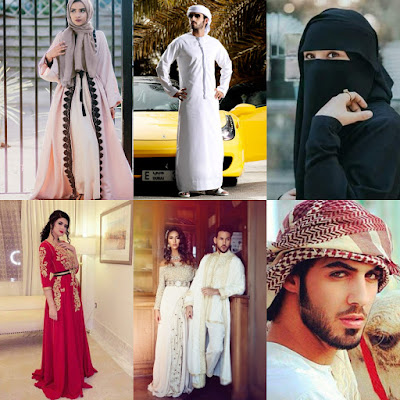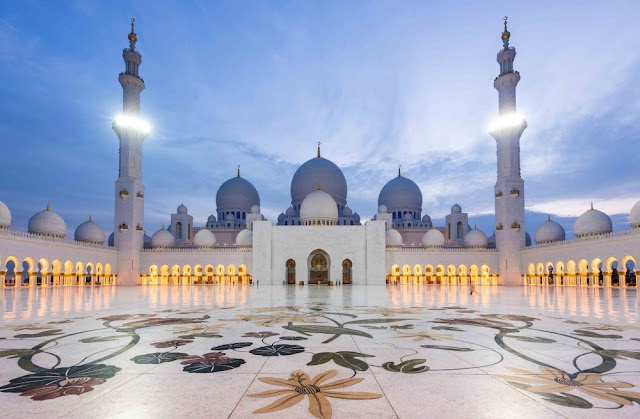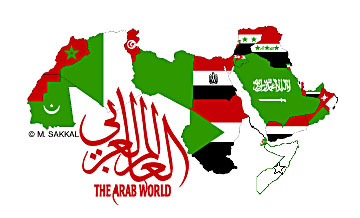Music
Arabic music
Arab
music has a long history of interaction with many other regional
musical styles and genres. It is an amalgam of the music of the Arab people in the Arabian Peninsula and the music of all the peoples that make up the Arab world today.
Genres
Franco-Arabic
Franco-Arabic
music is a popular form of West-meets-East style of music, similar in
many respects to modern Arabic Pop. This blend of western and eastern
music was popularized by artists such as Dalida (Egypt),
Sammy Clark (Lebanon), and Aldo from Australia. Although Franco-Arabic
music includes many forms of cross-cultural blending between the West
and the Middle East, musically the genre crosses over many lines as is
seen in songs that incorporate Arabic and Italian, Arabic and French
and, of course, Arabic and English styles or lyrics.
Arabic R&B, reggae, and hip hop
There
has also been a rise of R&B, reggae and hip hop influenced Arab
music in the past couple of years. These songs usually feature
a rapper in a traditional Arab pop song (such as Ishtar's song 'Habibi
Sawah'). The Moroccan singer Elam Jay developed a contemporary version
of the Gnawa genre that is fused with R&B which he named Gnawitone Styla.
Another variation of contemporary Gnawa played in Morocco is introduced
by Darga. Based in Casablanca, the group fuses Gnawa with Reggae.
Political Reggaeartists such as TootArd from the occupied Syrian Golan
Heights from Haifa (Originally from Iqrith) started gaining popularity
in Palestine in 2011 after the YouTube premiere of a song about the Arab
Spring (mainly the Tunisian revolution), called "The Green Revolution",
sung by them and an ensemble of Palestinian artists, most notable among
them being Mahmoud Jrere of DAM. Notable is Shadia Mansour, a
Palestinian British rapper known as "The First Lady of Arab Hip Hop.
Much of her music focuses on the Palestinian cause.
Also
there is the Moroccan pop introduced by the Moroccan singer Oussama
Belhcen who's mixing between the American and the Moroccan music in his
songs.
However
certain artists have taken to using full R&B and reggae beats and
styling such as Darine. This has been met with mixed critical and
commercial reaction.As of now it is not a widespread genre.
Arabic electronica
Electronic dance music is
another genre to come out into popularity. Often, songs in this genre
would combine electronic musical instruments with traditional Middle
Eastern instruments. Artists like Richii popularized this style with songs like "Ana Lubnaneyoun".
Hanine - Arabia
Arabic jazz
Another
popular form of West meets East, Arabic jazz is also popular, with many
songs using jazz instruments. Early jazz influences began with the use
of the saxophone by musicians like Samir Suroor, in the "oriental"
style. The use of the saxophone in that manner can be found in Abdel Halim Hafez's songs,
as well as Kadim Al Sahir and Rida Al Abdallah today. The first
mainstream jazz elements were incorporated into Arabic music by
the Rahbani brothers. Fairuz's later work was almost exclusively made up of jazz songs, composed by her son Ziad Rahbani.
Ziad Rahbani also pioneered today's oriental jazz movement, to which
singers including Rima Khcheich, Salma El Mosfi, and (on occasion) Latifa adhere. We can also find a lot of jazz music in Mohamed Mounir's songs starting from his first album Alemony Eneeki in
1977, and he is considered to be the King of Arabic Jazz and Arabic
Music generally.Another notable performer of this genre is the
Palestinian singer Reem Kelani who blends jazz with Arabic music, both in her own compositions and in her arrangements of traditional songs.
Awel Mara - Abdel Halim Hafez
Bektob esmak ya habibi - Fairouz
Arabic Jazz has met many new kinds of composition since the end of the 20th century:
- Modal forms with Anouar Brahem and Rabih Abou Khalil
- Mixed electric sound experiences with Dhafer Youssef
- New pop jazz styles with Titi Robin and Toufic Farroukh
- Other acoustic youth experiences with Hamdi Makhlouf, Amine & Hamza M'raihi and Jasser Haj Youssef
Arabic rock
Rock
music is popular all around the world, the Arab world being no
exception. There have been many Arab rock bands along the years that
fused rock, metal and alternative rocksounds with traditional Arab
instruments.[
Arabic rock has been gaining a lot of attention lately in the Middle East with bands like Cairokee, JadaL, Autostrad, El Morabba3 and Akher Zapheer of Jordan, The Wanton Bishops, Mashrou' Leila and Meen of Lebanon, Massar Egbari, Sahara, Wyvern and Cartoon Killerz of Egypt, Khalas, and Chaos of Palestine and Acrassicauda of Iraq. The band Hoba Hoba Spirit from Morocco is also gaining popularity, especially in the Maghrebi region. Rachid Taha, an Algerian musician, plays a fusion of rock and raï.
Cairokee feat. Tarek El-Sheikh - Fix
Characteristics of Arabic music
Much
of Arabic music is characterized by an emphasis on melody and rhythm,
as opposed to harmony. There are some genres of Arabic music that are
polyphonic, but typically, Arabic music is homophonic.
Habib Hassan Touma submits that there are five components that characterize Arabic music:
- The Arab tone system; that is, a musical tuning system that relies on specific interval structures and was invented by al-Farabi in the 10th century
- Rhythmic-temporal structures that produce a rich variety of rhythmic patterns, known as awzan or "weight", that are used to accompany metered vocal and instrumental genres, to accent or give them form.
- A number of musical instruments that are found throughout the Arab world that represent a standardized tone system, are played with generally standardized performance techniques, and display similar details in construction and design.
- Specific social contexts that produce sub-categories of Arabic music, or musical genres that can be broadly classified as urban (music of the city inhabitants), rural (music of the country inhabitants), or Bedouin (music of the desert inhabitants)..."
- An Arab musical mentality, "responsible for the esthetic homogeneity of the tonal-spatial and rhythmic-temporal structures throughout the Arab world whether composed or improvised, instrumental or vocal, secular or sacred." Touma describes this musical mentality as being composed of many things.
- If you want to listen more Arabic Music, i Recomend you this app is very useful:
Click there Anghami





Comentarios
Publicar un comentario